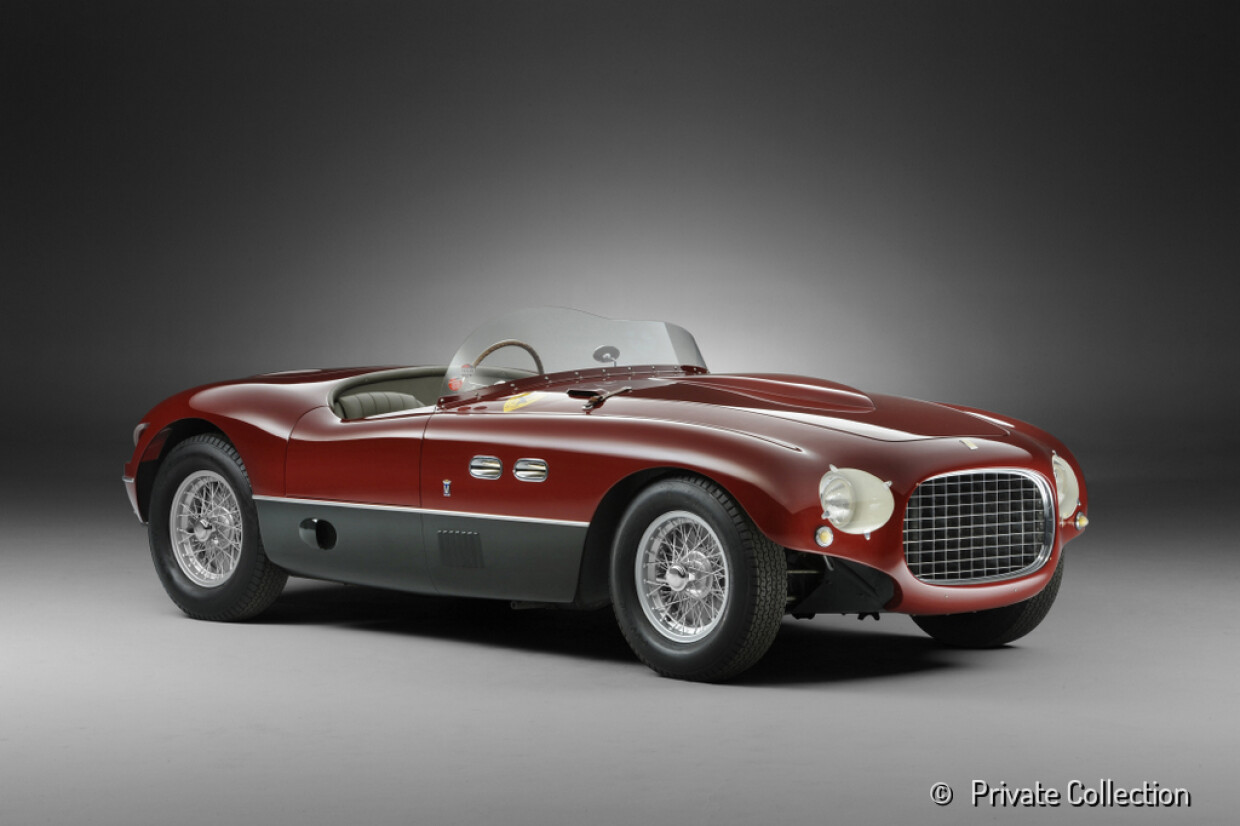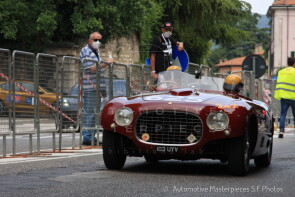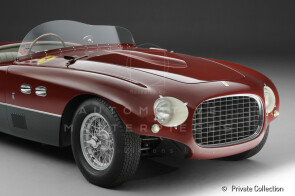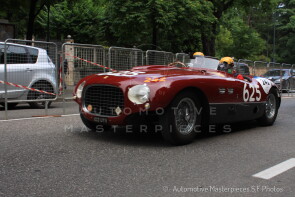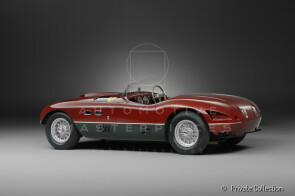
1953 Ferrari 250 millemiglia
ON/OFF
Why am I an Automotive Masterpiece?
G. Team cars
Scuderia Irlanda (IE)
H. Works cars
Scuderia Ferrari (IT)
J. Movie cars
Mille Miglia 1953 - Un film Shell (IT)
L. Limited edition cars
no. 4 manufactured
The Ferrari 250 is a series of sports cars and “granturismo” built by Ferrari from 1952 to 1964. The company's most successful early line, the 250 series includes many variants designed for road use or sports car racing. 250 series cars are characterized by their use of an engine designed by Gioacchino Colombo, with the exception of the 250 Europa. This engine was the “Tipo 125” with a displacement of “just” 2953 cc, but it was light and powerful. The 250 series was replaced by the 275 and 330 series cars.
The 250 MM is a racing car produced by Ferrari in 1953 in thirty-one examples. Following the victory of the 250 S at the 1952 Mille Miglia, Ferrari presented a chassis on which the new version of the 250 was to be built at the Paris Motor Show of the same year. The model was named "250 millemiglia" in honor of the victory in the famous race and was fully presented at the 1953 Geneva Motor Show. Two versions were prepared: a berlinetta by Pinin Farina, and a barchetta by Vignale, designed by Giovanni Michelotti. Pinin Farina’s berlinetta was innovative and ushered in a new era in automotive design; it was the basis for future Ferrari’s competition berlinettas. The barchetta by Vignale was introduced in three series, with each example varying slightly in detail. Early series cars featured open headlights and a small air vent in the middle of the bonnet, while later models differed by having recessed and covered headlamps, a closed bonnet bulge, triangular cutaways in the rear fenders, and a lower door line. Eighteen examples of the berlinetta and thirteen of the barchetta were made. The 250 millemiglia was essentially an update of the 250 S with significant improvements centered on the engine, suspension, and gearbox. Overall, these evolutions made the model more manageable than its predecessors. The 250 millemiglia made its racing debut at the Giro di Sicilia with private driver Paolo Marzotto. The model then won several national and international races with various gentleman drivers. The engine was the Colombo-designed V12 3-litre that produced around 240 hp at 7200 rpm and 178 ft-lbs of torque at 5250 rpm. The 250 millemiglia weighed just over 910 kg (850 kg the barchetta) and could accelerate to 60 mph in close to 5 seconds, covering the mile in just over 14 seconds. Its power-to-weight ratio would remain very impressive, even compared to later Ferrari berlinettas like the SWB and GTO. The factory team raced a few of these cars, but the model was primarily intended for Ferrari’s wealthy Italian clients.
The Ferrari 250 millemiglia, chassis no. 0288-MM, is one of the thirteen barchettas designed by Giovanni Michelotti for Vignale coachbuilder. Being the twelfth of thirty-one 250 MM built, it is considered one of the early II series, for the recessed and covered headlamps; it features two oval portholes with a chrome ring, triangular cutaways in the rear fenders, and the rear bulkhead set back on the driver's side with staggered seats. Marcel Massini, the authoritative Ferrari expert, analyzes stylistic details in his book Ferrari by Vignale. According to his tables, chassis no. 0288-MM is one of only four 250 millemiglia (Vignale), that feature both two oval portholes and triangular cutaways in the rear wings, making it even more "special." The car began its career as an official Scuderia Ferrari car, immediately entered in races: in April 1953, it participated in the Giro Automobilistico di Sicilia with Umberto Masetti driving but was involved in an accident. Ten days later, it was at the start of the Mille Miglia sporting a livery with a red top half and British racing green bottom, corners of the bonnet raised, and 3 slots on each side of the hood blister; it bore the test plate “MO 36”. Mike Hawthorne was the driver, but again luck was not on its side as it had to retire due to a brake issue. On that occasion, the car was pictured in the movie “Mille Miglia 1953 - Un film Shell” by Bill Mason. In May, it performed significantly better racing for the “Scuderia Irlanda” team in UK, on the Silverstone and Snetterton circuits, placing very well both overall and in its class. In May 1953, it was modified by the factory: magnetos and quads Weber 36IF/40 were replaced by distributors and dual barrel Weber 36 DCZ3 carburetors. In June 1953, the original engine was swapped with unit 0290M (from 166 MM/53), possibly to compete in the “under 2 liters” category. With the new engine, the 4-speed gearbox was replaced by a five-speed unit. The car then came into the hands of João Gaspar, a driver and Ferrari dealer for Portugal, who sold it to another Portuguese driver, Vasco Samerio, who entered it in the Grande Prémio de Portugal, racing it with a red top half and white bottom, with a single windshield. The car had another accident and overturned. It was repaired at Garage Palma & Morgado in Lisbon and probably it was then painted yellow. In 1954, chassis no. 0288-MM changed liveries again and was painted light yellow with a black bottom. The owner was another Portuguese driver, Francisco Márquez, who continued the car’s racing career, this time between Brazil, Portugal, and Spain, until 1958. After that, there are no further records of it participating in racing events. In the early 1970s, the car was purchased by Colin Crabbe, a British driver, collector, and later a dealer; in 1984 it became the property of Italian driver Giorgio Acutis who took it to the early re-enactment Mille Miglias, and other events for historic cars. Between 1984 and 1985, it was restored and received a new body by renowned specialist Dino Cognolato. In 1988, the car ended up in the Netherlands in the hands of another well-known name: Rudy Pas, and then in Switzerland with another owner, René Maspoli. In the early 2000s, it also became the property of Emilio Gnutti, among the others, and continued its career in important historic car events, such as the Mille Miglia and Pebble Beach concourse. Since 2019, it has been part of a private collection. In 2020, it received a FIVA passport and is completely restored and fitted with several racing items. It has been featured in the Mille Miglia's Chassis - The Ultimate Opus Volume III book by Sandro Binelli.
